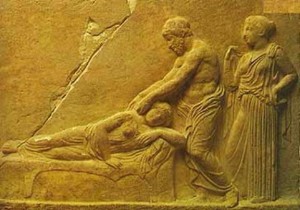Regulating Health
New York City Mayor Michael Bloomberg’s proposed ban on large sugary drinks has been a national hot topic this past week and rightly so. Is this another step into a nanny state or does it bring attention to potentially unhealthy habits? It is a fact our nation has been supersized and associated health problems continue to eat at our collective medical budget. Excessive sugary drinks are only one factor into our behavior that undermines the betterment of our health. How do we villianize sugar to the point of creating new laws to limit sources of intake and not do likewise for other questionable foods? And is food even the main culprit?
First Lady Michelle Obama put a positive spin on health by creating the programs “Let’s Move!” and “Let’s Plant” which are great incentives and should be applauded. Being such a public model of someone walking her talk, Ms. Obama deserves much credit for taking the initiative to get our country outside and into our gardens. Yet there is still a factor missing between the do’s and do not’s. It brings it back home to each of us personally; we must live in our bodies and appreciate the connection between food and exercise intuitively. But how?
So many of us live in our heads, pounding out our lives in the luminescence of our computer screens, skimming and scanning information, being productive in this world of ours today. We run to the gym and plug into our earphones and pound it out yet again on the treadmill. Rush home for a dinner that is quick to make, eat and clean up and get ready to do it all over again the next day. But what have we lost?
Mind Body Connection
Medical experts have been identifying the mind-body connection more this past decade yet this is not something new. Our ancestors knew this and we are only now rediscovering the importance of this symbiotic relationship between our minds and our bodies. With that connection in place we gravitate to what is healthy for our body, and with that energy infusion, we use our bodies to carry out our responsibilities in the world.
Over 4,000 years ago Hippocrates, the “Father of Modern Medicine”, wrote of the many benefits of massage therapy and reflexology, that “the physician must be experienced in many things, but assuredly in rubbing”. Hippocrates is noted for prescribing massage for soldiers to release fatigue and pain while in training and games. In India’s ancient history of Ayurvedic medicine, massage known as Abhyangha, continues to be the standard not only in treatment but also in preventing disease. Even the Bible references the laying of hands and the use of perfumed oils for purification. Most every ancient culture contains records of massage and mind body techniques; it was an accepted – and expected – practice.
What Is Old Is New Again
Because today’s physicians see direct results of this therapeutic work, they are willing to prescribe it and many insurance companies are seeing the merit of utilizing this modality for preventive measures in health care. Athletes have long known the advantages and massage is now coming into the mainstream for us every day folks including pregnant moms to be, and others needing a healing touch.
Massage is a non-invasive technique to help rid the body of toxins, loosen the binding of muscles and joints, and bring attention to the whole of a person. The use of aroma therapy, oils and techniques can address multiple issues within the body, and the mind. With this balance in tact we are now drawn to healthier choices in our lives and seeking out the foods to fuel our body and activities to put our body in motion.
Should It Be A Law?
What if our politicians mandated massage or body work rather than legally restricting certain foods or drinks? Wouldn’t that address a whole host of health problems that are quickly becoming an epidemic in our country? Yet again, should the government be regulating what we eat or drink if the USDA has already given it a pass? Where does personal responsibility come in? What if we skipped that $2 a day sugary drink and put the money towards a monthly massage? Now that is food for thought.
By Kamala Silva Wolfe
Published June 6, 2012
Peninsula Progress

Hi,
I am a Expert Travel Expert from south India and a sub agent for all the Ayurvedic Treatment courses in a high quality school. If any need course in Ayurveda or Yoga, Please contact me for a better option. I do also packages in south India for foreigners and have received agood feedback.
I lost my job due to cancer disease and now work as a self employed with the experiencce i have.
Please contact me for any inquiry – entrez@mail.com
Having given a number of maesgass, I think I can offer a few tips.A nicely-scented oil or cream is good, especially if the person wanting the massage is tensed up or in pain. Make sure it is warm though: Cold on warm skin can REALLY tense a person up.Apply pressure, but don’t roll the muscle: That will cause it to knot up.Don’t put too much pressure on the feet, if that’s where you’re starting: The bones and arches can be delicate. But holding pressure on spots up either side of the achilles’ tendon will help your legs relax.For a back massage, rub up either side of the spine, and start from low down. That will cause the tension to more or less roll up and out.I hope that helps!